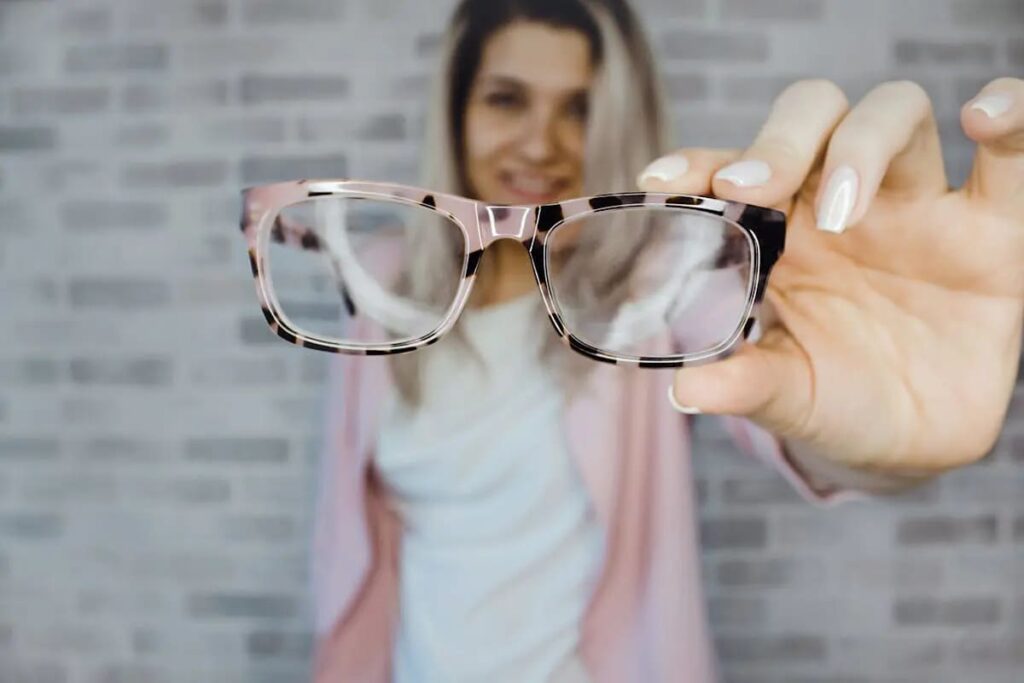Check Frame Width
One key aspect to consider when checking if your eyeglass frames fit properly is ensuring that the width of the frames is not wider than your face. Frames that are too wide can cause discomfort, lead to sliding, and result in an insecure fit.
When it comes to frame width, the aim is to find a balance where the frames complement the proportions of your face without extending beyond the natural width. Frames that align well with the sides of your face provide a harmonious look and better stability.
A simple way to check the frame width is to look in the mirror and assess if the frames align with the width of your face. Ideally, the frames should end where your face ends, creating a seamless transition from the frame to your skin.
Another indicator of proper frame width is when the frames feel like a natural extension of your facial features. They should enhance your appearance without overpowering or overshadowing the rest of your face.
Opting for frames that match the width of your face can also contribute to a more balanced overall look. Finding the right frame width is not just about fit but also about enhancing your facial structure and features.
Position of Eyes
A critical factor in determining the proper fit of your eyeglass frames is the position of your eyes within the lenses. The center of your eyes should align with the center of the lenses horizontally for optimal vision correction.
Achieving the correct position of your eyes within the frames is crucial for maximizing the effectiveness of your lenses. Proper alignment ensures that you are looking through the optical center of the lenses for the best clarity and focus.
When your eyes are positioned correctly within the lenses, you experience consistent vision correction across different angles of view. This alignment minimizes distortions and aberrations, providing you with clear and accurate vision.
Misalignment of your eyes within the lenses can lead to visual discomfort, such as eye strain and headaches. By confirming that your eyes sit at the right height and position in the frames, you can optimize your visual experience.
The relationship between the position of your eyes and the lenses is crucial for ensuring that your eyeglasses fulfill their corrective purpose. Proper alignment enhances the performance of your prescription, allowing you to see clearly and comfortably.
Nose Fit
Checking the fit of your eyeglass frames on your nose bridge is essential to ensure comfort and stability. Frames that sit comfortably on your nose bridge without sliding down or causing pressure points are more likely to provide a secure fit.
The nose fit of your frames significantly impacts your overall wearing experience. Frames that are too loose or too tight on the nose bridge can lead to constant adjustments and discomfort throughout the day.
A proper nose fit also prevents the frames from leaving unsightly marks or indents on your skin. Comfortable frames that rest gently on your nose without excessive pressure ensure that you can wear your eyeglasses for extended periods without irritation.
When assessing the nose fit of your frames, pay attention to the balance between snugness and comfort. The frames should stay in place without pinching your nose or causing redness, allowing you to wear them comfortably for hours on end.
The optimal nose fit of your frames contributes to their overall stability on your face. By securing the frames in the right position on your nose bridge, you can avoid unnecessary shifting or slipping, maintaining a consistent and comfortable fit.
Temple Length
Another crucial aspect of ensuring that your eyeglass frames fit properly is the length of the temples. It is important to ensure that the temples rest lightly against your head without exerting excessive pressure behind your ears for extended comfort.
Proper temple length plays a significant role in preventing discomfort and headaches that can result from temples that are too short or too long. The ideal temple length keeps the frames securely in place without causing strain on your ears.
When the temples of your frames are the right length, you can enjoy a snug yet gentle fit that supports the weight of the glasses evenly. This balanced distribution of pressure reduces the likelihood of headaches and discomfort associated with ill-fitting frames.
The temples should curve gently behind your ears, following the natural contour of your head for a customized fit. Frames with adjustable temple tips offer the flexibility to achieve the perfect balance between stability and comfort for all-day wear.
By selecting frames with the correct temple length, you can enhance the overall comfort and wearability of your eyeglasses. Well-fitted temples provide a secure grip without being overly tight, allowing you to move freely without the frames shifting out of place.
Ensuring Proper Fit
By following these steps, you can ensure that your eyeglass frames fit properly, providing you with comfort and clear vision.

